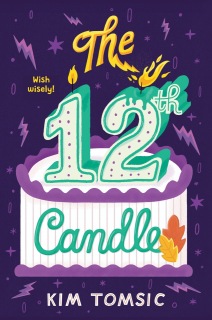Take a peek “Behind the Scenes” as Kim Tomsic shares some of the learning from her writing journey, including some great resources. Thanks, Kim!
 “What’s your story about?” In my early writing days, I’d answer this question with, “…and this happens, and that happens, and so on.” I thought layering on multiple exciting events was how successful stories were made. Then I met Melissa Manlove, Senior Editor at Chronicle Books; she helped me gain a new perspective. Melissa and I connected in my pre-published days at an SCBWI conference. She kindly told me that I had a lot of stuff happening to my protagonist rather than having my protagonist make stuff happen. In that lightbulb moment, I became determined to study the craft of writing. Here are few nuggets I picked up along the way.
“What’s your story about?” In my early writing days, I’d answer this question with, “…and this happens, and that happens, and so on.” I thought layering on multiple exciting events was how successful stories were made. Then I met Melissa Manlove, Senior Editor at Chronicle Books; she helped me gain a new perspective. Melissa and I connected in my pre-published days at an SCBWI conference. She kindly told me that I had a lot of stuff happening to my protagonist rather than having my protagonist make stuff happen. In that lightbulb moment, I became determined to study the craft of writing. Here are few nuggets I picked up along the way.
Nugget One: In Wired for Story by Lisa Cron, I discovered that our brains are hardwired for story but in order to keep the synapses firing, tension must appear on the pages. I gained further understanding when I read her book Story Genius. Cron says that in every single scene, your character must have a want, and the reader should be able to follow what your character wants to happen, what the character thinks will happen, and what is at stake. Sure, the plot covers the big desire, but micro-wants show up in every scene, and readers must connect with these micro-wants. For example, in an epic quest where the plot centers around finding a lost book that holds the key to saving a kingdom, a single scene’s micro-want might not focus on the main plot point, but instead features the protagonist (who the reader is invested in) who hopes a man-eating tiger doesn’t see her; who think there’s no escape but is willing to choose an action anyhow; and whose life or death is at stake. Stakes are the foundation of tension; without tension nothing else matters because the brain loses interest.
Nugget Two: In K.M. Weiland’s book, Creating Character Arcs, I came to understand that the “lie” your protagonist believes about him/herself drives his/her actions and choices. My editor at HarperCollins, Maria Barbo, and I talk about exploiting this lie as “giving our characters a therapy session.” Shrek is a great example of a character whose choices and actions come as a result of the lie. The lie he believes is that the world is going to hate him, so he decides to dislike people first. LIE=people are going to dislike me; ACTION=I’ll be angry and mean to everyone I meet.
 Nugget three: In a Character Bible session led by author Marie Lu, I came to know that in order for characters to be believable, the character has to feel fully fleshed out, and that means characters can’t be perfect. They must have flaws. Readers want to put themselves in the shoes of the protagonist, and it’s impossible to relate to a perfect character. For example, Happy Potter will lie. He’ll sneak out at night. He’s willing to break rules and we love him for not being an obedient child. He’s perfectly flawed!
Nugget three: In a Character Bible session led by author Marie Lu, I came to know that in order for characters to be believable, the character has to feel fully fleshed out, and that means characters can’t be perfect. They must have flaws. Readers want to put themselves in the shoes of the protagonist, and it’s impossible to relate to a perfect character. For example, Happy Potter will lie. He’ll sneak out at night. He’s willing to break rules and we love him for not being an obedient child. He’s perfectly flawed!
 Nugget four: Know what your story is about by connecting with its heartbeat. Sure, you’ll want to know your big picture and high-level pitch, but beyond the pitch, what is the pulse of your story. The heartbeat is your theme plus what YOU bring when writing that makes you the one to uniquely tell this story. When I say theme, I don’t mean a lesson. Nobody wants to read something didactic. One example of theme is “perseverance,” like in my nonfiction picture book Guitar Genius. No matter what obstacle Les Paul faced, he never gave up. Another example of theme is “finding your voice” like in my novel The 11:11 Wish. Megan must speak up or lose her voice for good (and by the way, the lie she believes is what she has to say/her opinion isn’t worthy).
Nugget four: Know what your story is about by connecting with its heartbeat. Sure, you’ll want to know your big picture and high-level pitch, but beyond the pitch, what is the pulse of your story. The heartbeat is your theme plus what YOU bring when writing that makes you the one to uniquely tell this story. When I say theme, I don’t mean a lesson. Nobody wants to read something didactic. One example of theme is “perseverance,” like in my nonfiction picture book Guitar Genius. No matter what obstacle Les Paul faced, he never gave up. Another example of theme is “finding your voice” like in my novel The 11:11 Wish. Megan must speak up or lose her voice for good (and by the way, the lie she believes is what she has to say/her opinion isn’t worthy).
Keep digging into your art. You’ll find additional nuggets in craft books, articles, and blogs, and as you gather tips you’ll take your writing to another level. For an additional resource, consider picking up one of my favorite craft books, Save the Cat by Blake Snyder. It’s meant for screenwriters, but I believe every author should read it.
Wonderful advice about craft. Thank you!
LikeLike